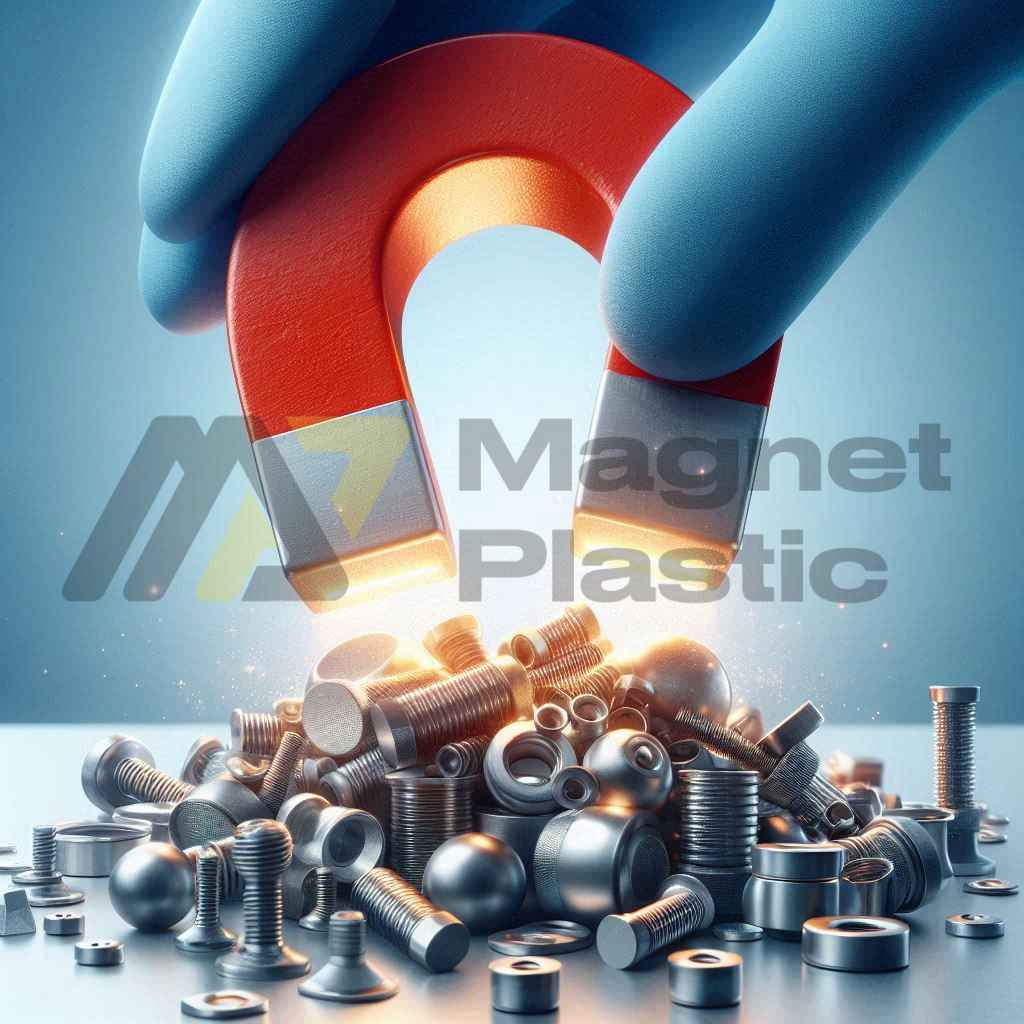Do Magnets Lose Strength and Magnetization Over Time?
Yes, magnets do lose magnetization over time. However, this process is natural and very slow. A standard permanent neodymium magnet, stored under proper conditions and not exposed to external factors, will lose less than 5% of its magnetic power over 100 years. This durability is due to its high coercivity, which defines the magnet’s resistance to demagnetization.
What Causes Magnetism Loss?
Several factors can affect a magnet’s magnetization, including:
- Extreme temperatures (hot or cold)
- Strong impacts or vibrations
- Exposure to powerful magnetic fields
- Alternating electric currents
- Corrosion and oxidation
- Prolonged radiation exposure
Heat Exposure: A Primary Cause
Exposing magnets to high temperatures can damage their internal structure and reduce their magnetic force. Each magnet has two key temperature ratings: operating temperature and Curie temperature. The former is the maximum temperature the magnet can endure without losing performance; the latter is the point beyond which the magnet permanently loses all magnetism.
Standard neodymium magnets have an operating temperature of 80°C. However, variants like N35M (100°C), H (120°C), or EH (200°C) offer better resistance. Their Curie temperature ranges from 300°C to 350°C. Ferrite and alnico magnets tolerate even higher temperatures—up to 250°C and 450°C, respectively.
Cold Exposure: What Happens?
Extreme cold affects magnets differently depending on the material. Neodymium magnets actually become slightly stronger down to –125°C. Below that, their strength decreases, but it fully recovers once they return to normal temperatures. Ferrite magnets, however, can suffer permanent damage at temperatures below –40°C.
Impacts, Vibrations, and Welding
Permanent magnets are brittle. Dropping or striking them can cause chips or cracks, reducing their strength. While most tolerate vibrations well, prolonged exposure can weaken weaker magnets. Welding near a magnet can lead to demagnetization due to heat or induced electric current.
Corrosion and Radiation
Corrosion is a major risk, especially for neodymium magnets, which contain over 60% iron. Without protective coatings (e.g., nickel, rubber), exposure to water or humidity can degrade them. Ferrite magnets, made mostly of iron oxide, are naturally more corrosion-resistant.
Radiation, particularly in industrial or space environments, can alter the magnetic field over time.
How to Store Magnets Correctly
To avoid loss of strength and performance, store magnets in a dry, protected area. Avoid exposing ferrite magnets to temperatures below –40°C and neodymium magnets above 80°C. Keep them away from strong electric currents, magnetic fields, and vibrations. When storing multiple magnets together, stack them in the same orientation to prevent magnetic interference. Also, protect them from mechanical shocks and moisture.
Conclusion
Although permanent magnets retain their strength for decades, factors like heat, moisture, and physical impacts can accelerate magnetization loss. With proper storage and usage, magnets remain effective in industrial, technological, and household applications for a very long time.
